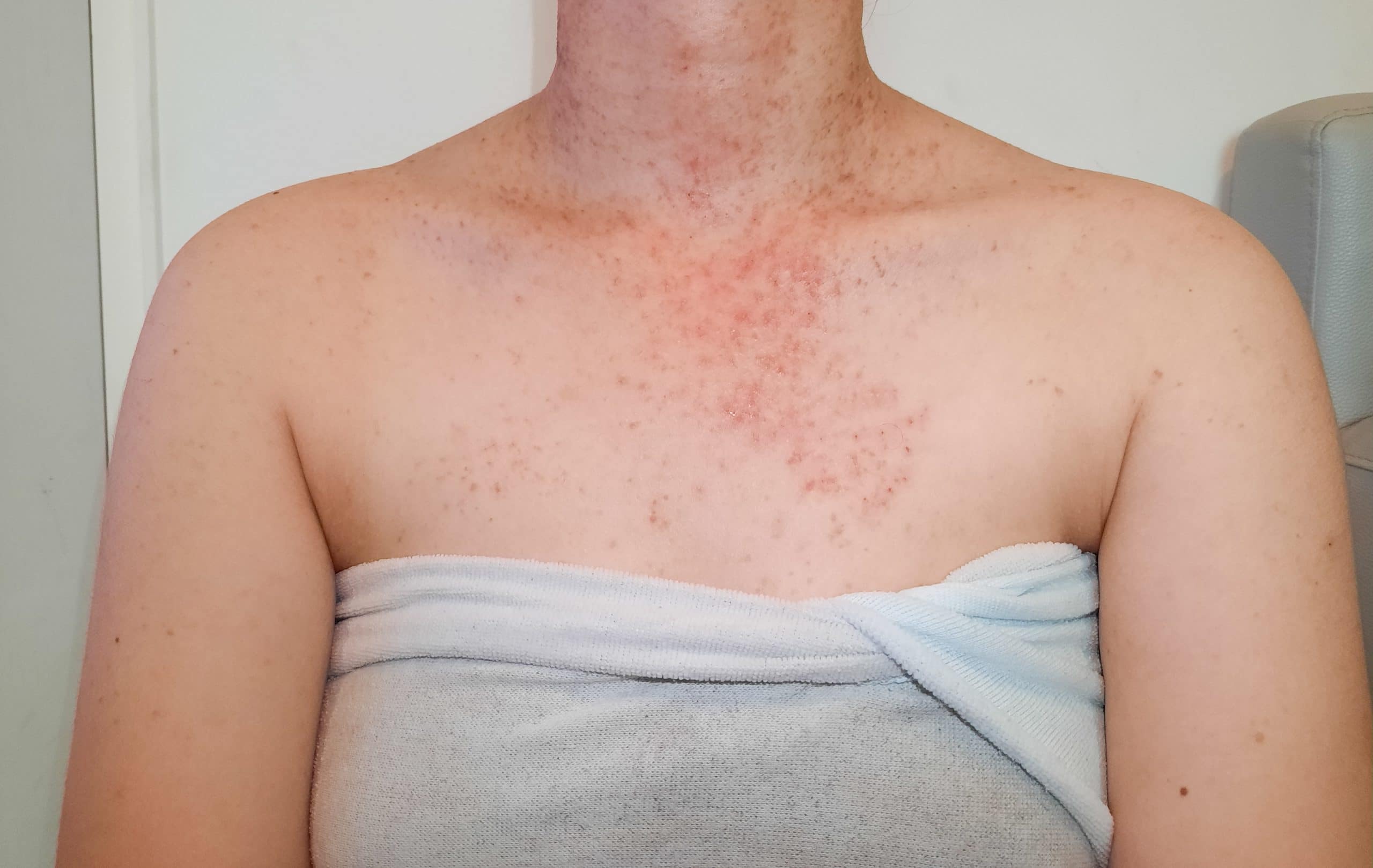
Folliculitis is a common skin condition that can affect anyone, causing red, inflamed bumps around hair follicles. These bumps often resemble acne but can be itchy or painful. Folliculitis occurs when hair follicles become infected with bacteria, fungi, or viruses. It can appear on any part of the body where hair grows, including the scalp, face, arms, legs, and back. Factors like shaving, tight clothing, and hot tubs can increase the risk. While mild cases often clear up on their own, severe or recurring instances may require medical treatment. Understanding the causes, symptoms, and treatments can help manage and prevent this irritating condition.
What is Folliculitis?
Folliculitis is a common skin condition where hair follicles become inflamed. It can be caused by bacterial or fungal infections, irritation from shaving, or even friction from clothing. Here are some intriguing facts about folliculitis:
-
Folliculitis can appear anywhere on the body where hair grows, including the scalp, face, chest, back, buttocks, and legs.
-
Symptoms often include red bumps, pimples, or pustules around hair follicles, which can be itchy or painful.
-
Hot tub folliculitis is a specific type caused by the bacteria Pseudomonas aeruginosa, often found in inadequately chlorinated hot tubs.
-
Shaving too closely can lead to a type of folliculitis known as pseudofolliculitis barbae, commonly referred to as razor bumps.
-
Tight clothing can cause friction and sweat buildup, leading to folliculitis, especially in areas like the thighs and buttocks.
-
Folliculitis can be superficial, affecting only the upper part of the hair follicle, or deep, involving the entire follicle.
-
Staphylococcus aureus is a common bacterium responsible for many cases of bacterial folliculitis.
-
Fungal folliculitis is often caused by yeast infections, particularly in warm, moist environments.
-
People with weakened immune systems, such as those with diabetes or HIV, are more susceptible to folliculitis.
-
Folliculitis can sometimes be mistaken for acne, but the two conditions have different causes and treatments.
Causes and Risk Factors
Understanding what triggers folliculitis can help in preventing and managing the condition. Here are some key causes and risk factors:
-
Frequent shaving or waxing can irritate hair follicles, leading to folliculitis.
-
Using hot tubs or swimming pools that are not properly maintained increases the risk of developing hot tub folliculitis.
-
Wearing tight clothing or gear, such as helmets or backpacks, can cause friction and sweat buildup, leading to folliculitis.
-
Sharing personal items like razors, towels, or clothing can spread bacteria or fungi that cause folliculitis.
-
Certain skin conditions, like dermatitis or eczema, can make the skin more prone to folliculitis.
-
Obesity can increase the risk due to skin folds and increased sweating.
-
Using heavy, oily skin products can clog hair follicles, leading to folliculitis.
-
Prolonged use of antibiotics can disrupt the natural balance of bacteria on the skin, making it more susceptible to infections.
-
Hormonal changes, such as those during puberty or pregnancy, can increase the likelihood of developing folliculitis.
-
Poor hygiene, including infrequent bathing or not washing after sweating, can contribute to folliculitis.
Symptoms and Diagnosis
Recognizing the symptoms and getting a proper diagnosis is crucial for effective treatment. Here are some important points:
-
Folliculitis often starts as small red bumps or white-headed pimples around hair follicles.
-
These bumps can develop into crusty sores that may ooze pus.
-
Itching and tenderness are common symptoms of folliculitis.
-
In severe cases, folliculitis can cause large, painful boils or abscesses.
-
A dermatologist can diagnose folliculitis by examining the skin and, if necessary, taking a sample of the affected area for lab testing.
-
Sometimes, a skin biopsy is needed to rule out other conditions that mimic folliculitis.
-
Chronic folliculitis can lead to scarring and permanent hair loss if not treated properly.
-
Folliculitis can recur, especially if the underlying cause is not addressed.
-
In some cases, folliculitis can spread to other parts of the body, leading to more widespread infection.
-
Early diagnosis and treatment can prevent complications and improve outcomes.
Treatment and Prevention
Effective treatment and preventive measures can help manage folliculitis and reduce the risk of recurrence. Here are some strategies:
-
Mild cases of folliculitis often clear up on their own with good hygiene and self-care.
-
Over-the-counter topical antibiotics or antifungal creams can help treat mild infections.
-
For more severe cases, a doctor may prescribe oral antibiotics or antifungal medications.
-
Warm compresses can help soothe the skin and promote healing.
-
Avoiding shaving or using an electric razor can reduce irritation and prevent folliculitis.
-
Wearing loose-fitting clothing made of breathable fabrics can help reduce friction and sweat buildup.
-
Regularly cleaning and maintaining hot tubs and swimming pools can prevent hot tub folliculitis.
-
Using non-comedogenic skin products can help keep hair follicles clear and reduce the risk of folliculitis.
-
Practicing good hygiene, such as showering after sweating and not sharing personal items, can prevent the spread of infections.
-
For chronic or recurrent folliculitis, a dermatologist may recommend laser hair removal to reduce the number of hair follicles.
Complications and Long-term Effects
Folliculitis can sometimes lead to complications if not properly managed. Here are some potential long-term effects:
-
Chronic folliculitis can cause scarring and dark spots on the skin.
-
Severe infections can lead to abscesses, which may require drainage by a healthcare professional.
-
Recurrent folliculitis can result in permanent hair loss in the affected areas.
-
In rare cases, folliculitis can lead to cellulitis, a serious skin infection that requires immediate medical attention.
-
Folliculitis can negatively impact a person's quality of life, causing discomfort and self-consciousness.
-
Untreated folliculitis can spread to other parts of the body, leading to more widespread infection.
-
Some people may develop keloids, which are raised scars that form at the site of healed folliculitis.
-
Folliculitis can sometimes cause hyperpigmentation, leading to dark patches on the skin.
-
In severe cases, folliculitis can lead to systemic infections, especially in individuals with weakened immune systems.
-
Early and effective treatment can prevent complications and improve the overall prognosis for individuals with folliculitis.
Final Thoughts on Folliculitis
Folliculitis, while common, can be a real nuisance. Understanding its causes, symptoms, and treatments helps manage and prevent flare-ups. From bacterial infections to fungal issues, knowing what triggers your folliculitis is key. Simple hygiene practices, like regular washing and avoiding tight clothing, can make a big difference. Over-the-counter treatments often work, but sometimes, a doctor's visit is necessary. If you notice persistent or worsening symptoms, don't hesitate to seek professional advice. Remember, everyone's skin is different, so what works for one person might not work for another. Stay informed, stay proactive, and you'll have a better handle on keeping your skin healthy. Folliculitis doesn't have to control your life. With the right knowledge and care, you can keep it in check and enjoy clearer, more comfortable skin.
Was this page helpful?
Our commitment to delivering trustworthy and engaging content is at the heart of what we do. Each fact on our site is contributed by real users like you, bringing a wealth of diverse insights and information. To ensure the highest standards of accuracy and reliability, our dedicated editors meticulously review each submission. This process guarantees that the facts we share are not only fascinating but also credible. Trust in our commitment to quality and authenticity as you explore and learn with us.


